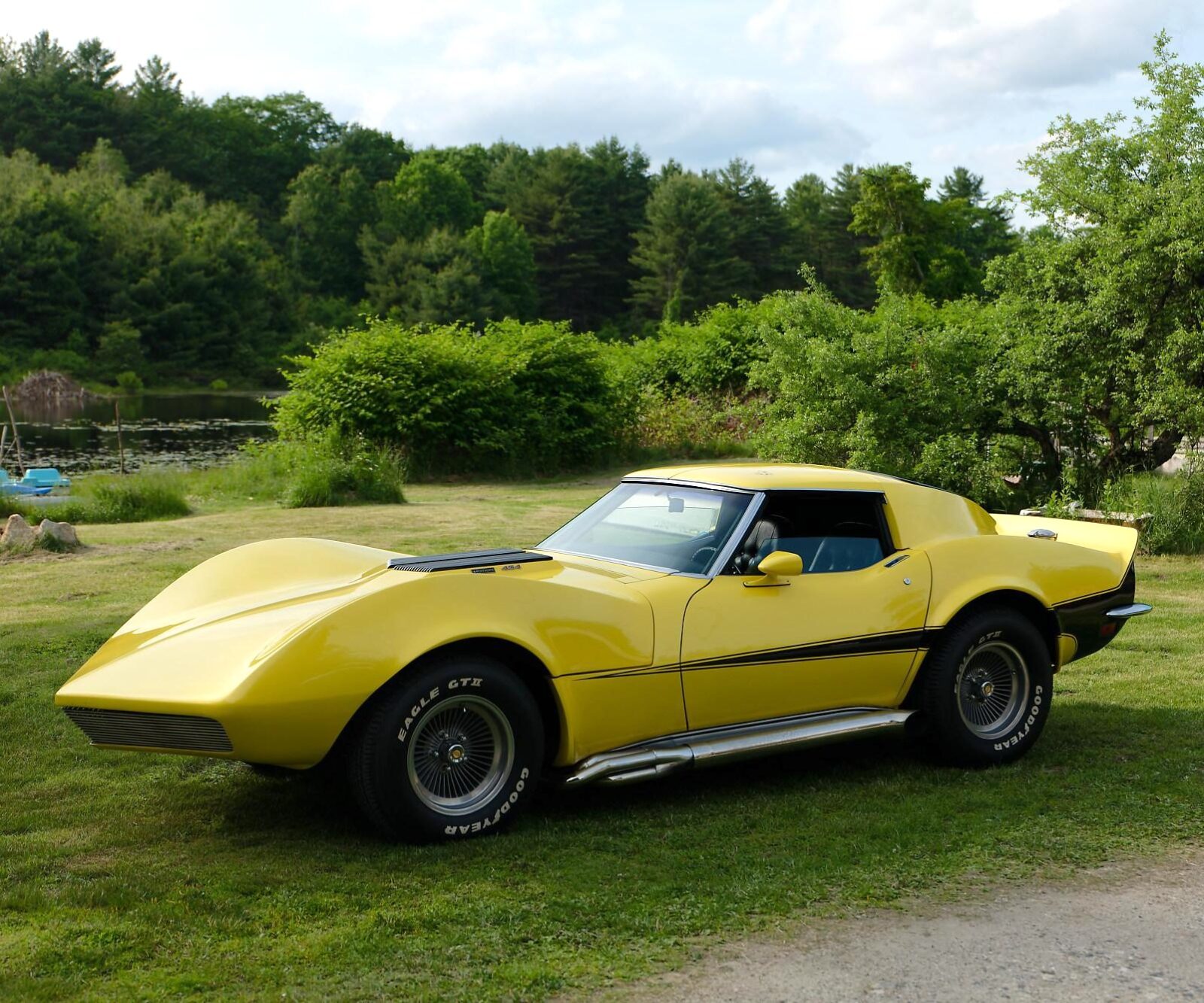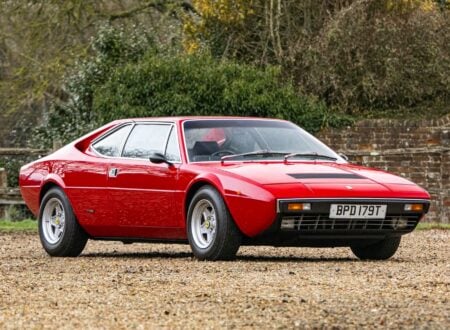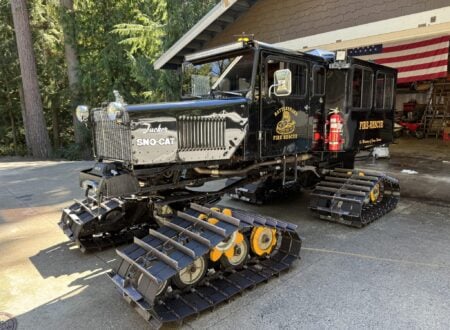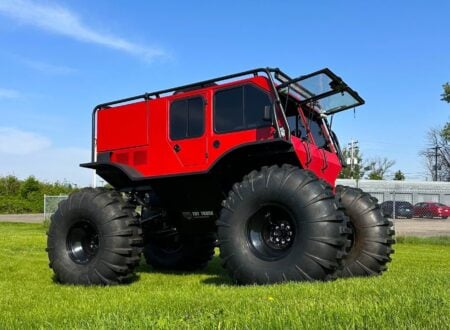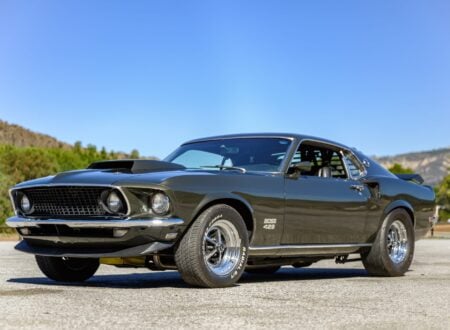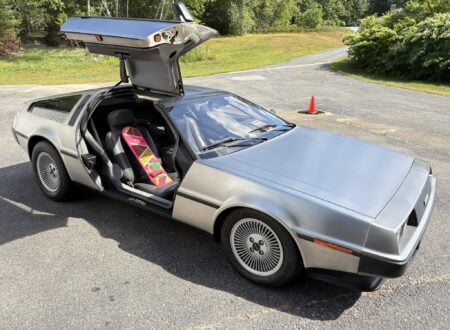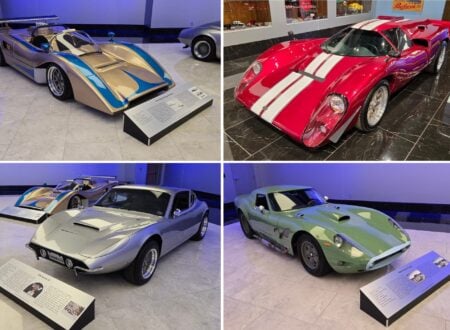This is a Motion Moray GT Corvette built by Motion Performance when still brand new in 1972. It has completely revised bodywork, a new interior, and a modified 454 LS5 V8 under the hood.
Motion Performance was a Skunkworks-style tuning garage based in Baldwin, Long Island, that gained national notoriety in the 1960s and 1970s for building some of the most outlandish street-legal muscle cars in the United States.
Fast Facts: The Motion Moray GT Corvette
- The Motion Moray GT is a one-off 1972 Corvette modified by Motion Performance, known for combining unusual styling with high-output V8s. Its body was redesigned to reference GM concept cars like the Mako and Manta Ray, with a clamshell front, tapered fastback roof, and integrated spoiler giving it a completely new profile.
- Under the hood it has a modified 454 LS5 V8. The Moray GT was later refinished in custom yellow and gold pearl paint, with additional upgrades including a new grille, hood vents, and turbine wheels added in consultation with Joel Rosen.
- Motion Performance, led by Joel Rosen, was best known for its Baldwin-Motion Camaros, Corvettes, and Novas, which were sold through Baldwin Chevrolet and built to deliver sub-12-second quarter-mile times. Rosen famously guaranteed this in writing, backed by dyno-tuned builds and NHRA-compliant track tests.
- Regulatory pressure from the EPA and DOT ended Motion’s street car program in the 1970s, prompting a pivot to performance parts sales. This Moray GT survives as a rare example from the shop’s peak era, and it comes with extensive documentation, including photos of Rosen sitting in the car and Corvette engineer Dave McLellan signing its roof.
A History Speedrun: Motion Performance
Joel Rosen got his technical start in the US Air Force – he trained at Sheppard Air Force Base in Texas, specializing in piston aircraft engines at the Reciprocating Engine Mechanics School. During this time he also led the General’s Drill Team.
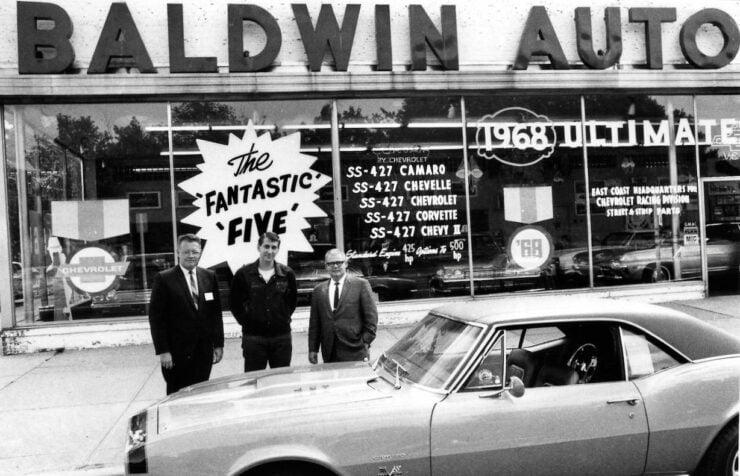

Once out of the service, Rosen returned to his native Brooklyn in New York and immersed himself in import car tuning, working on Opels, Volvos, and especially Volkswagens.
He put all he had learned working on aircraft engines into his work with these European cars, and before long, he and his early business partner Joe Petralia had built a record-breaking VW drag racing car.
Rosen eventually opened Motion Performance in Baldwin, Long Island and installed a Clayton chassis dynamometer – this was an unusual move for a small shop at the time.
That dyno became central to Motion’s core identity, as it allowed Rosen to offer proof of power gains and to tune cars for real-world conditions, not just catalog numbers. Motion wasn’t just another garage selling hype – it was selling documented, tested horsepower that customers could see, hear, and feel.
In 1966, Rosen partnered with Baldwin Chevrolet, resulting in the now world-famous Baldwin-Motion series of high-performance Chevrolets. The arrangement was simple but totally unheard of for the time – a customer could walk into Baldwin Chevrolet, order a brand new Camaro, Chevelle, Corvette, or Nova, and have it immediately transferred to Motion Performance for a series of upgrades.
These upgrades ranged from mild tuning tweaks to full-blown drag setups with big-block engines, fiberglass hoods, modified bodies, ladder bars, altered rear gearing, uprated suspension, and full custom paintwork.
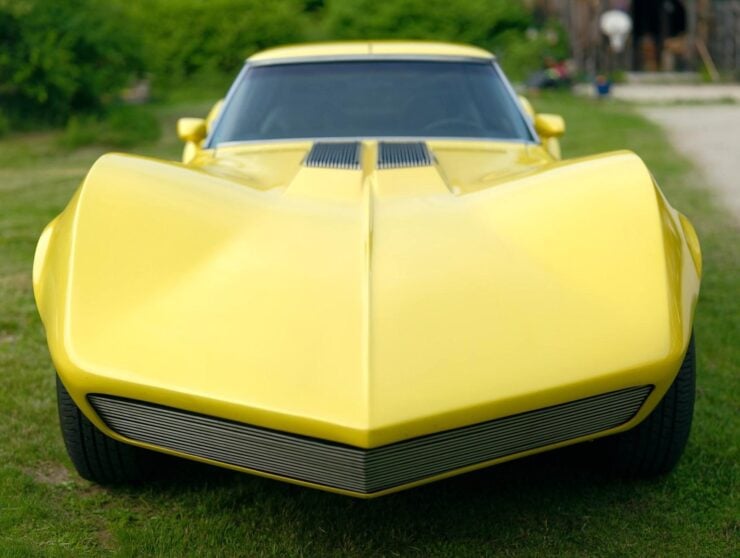

The Phase III Camaro became one of the most famous of these builds. Each Phase III car was built specifically to run the quarter-mile in under 12 seconds, a feat Rosen guaranteed in writing. If the car failed to meet that benchmark, he promised a full cash refund – this was an audacious claim, but one he was confident in thanks to intensive custom work and dyno tuning.
Any qualifying 1/4 mile run had to be done by a licensed driver on an NHRA or AHRA sanctioned track years later Rosen would note with pride that not a single customer ever came back looking for that refund.
The Baldwin-Motion Corvette was probably the most famous model – one example from 1973 was powered by a 482 bhp 454 V8, fitted with Motion’s signature side pipes, and an aggressive body kit that transformed its looks.
Each Baldwin-Motion car came with full documentation and custom badging, turning otherwise standard Chevys into street-legal supercars that were capable of besting the very quickest cars coming out of Europe at the time. While the cars remained street registered, many were also drag-strip ready, and were raced competitively at drag strips across the country.
By the early 1970s, federal regulators had begun clamping down on modified street vehicles. The Environmental Protection Agency and Department of Transportation were targeting performance shops that sold non-compliant cars.
Motion Performance’s visibility made it a key target. After an investigation, Rosen agreed to stop selling turnkey modified cars directly for street use, shifting instead to selling parts and kits that customers could install themselves.
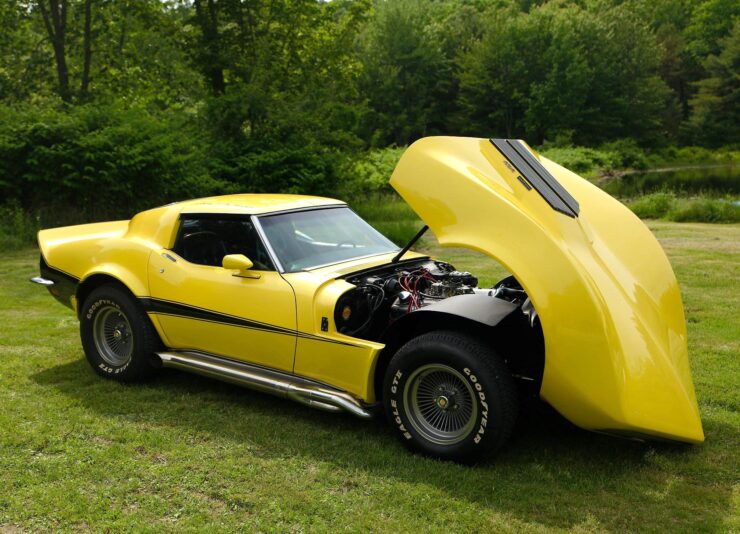

The 1972 Motion Moray GT Corvette Shown Here
The car you see here is a one-off Motion Moray GT, it was built as a styling exercise, incorporating design elements from both the Mako Shark concept car and its successor, the Manta Ray.
These included a bespoke front clamshell with concealed headlights, a new tapered fastback roofline with T-top roof panels, and an integrated rear spoiler.
The Motion Moray GT was built on a brand new Corvette in 1972 at the St Louis, Missouri, assembly plant and it was equipped with a 454 cubic inch LS5 V8.
The car was refurbished in 2005 after it was bought by Dan Hayes, who worked with Motion founder Joel Rosen on a series of additional modifications. This work included the addition of a custom-fabricated grille and hood vents, installing turbine-style wheels, and refreshing the drivetrain. At this time it was refinished in DuPont Hot Hues Lemon Yellow with gold pearl and black stripes.
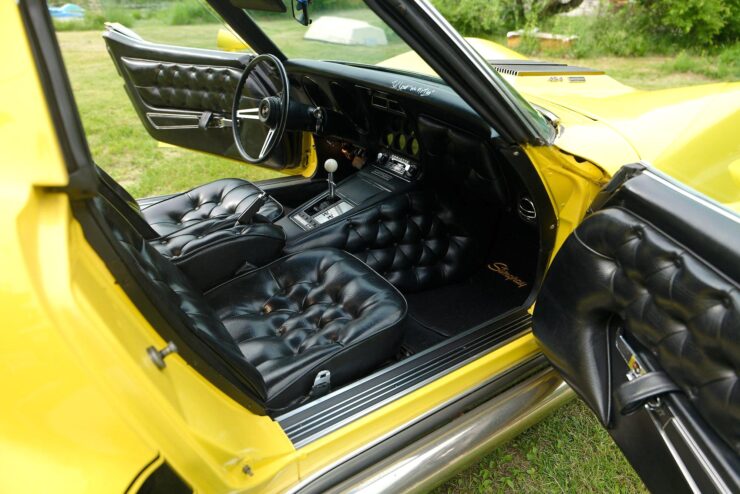

Once it was completed it was featured in both Motor Trend and Corvette Fever, and now of course on Silodrome too. Photographs showing Joel Rosen and Corvette chief engineer Dave McLellan signing the roof panels will accompany the car along with correspondence, literature, and three binders of records.
It’s now being offered for sale out of Naples, Maine with records, historical correspondence, literature, and Maine registration. If you’d like to read more about it or register to bid you can visit the listing here.
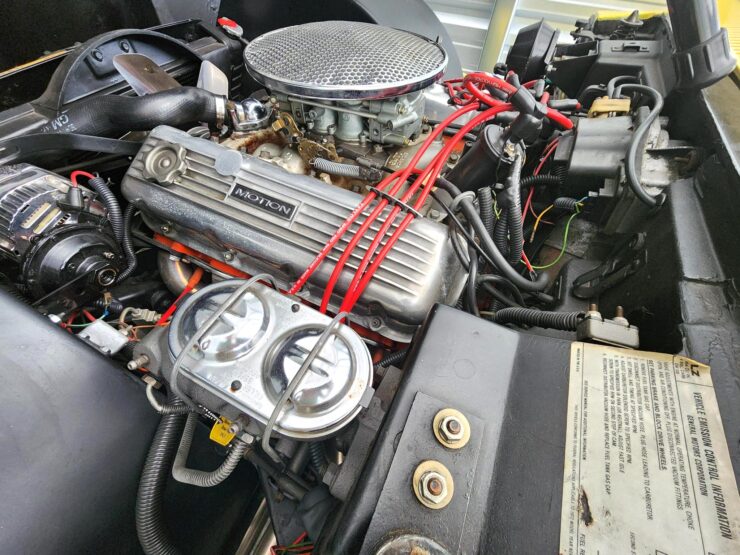
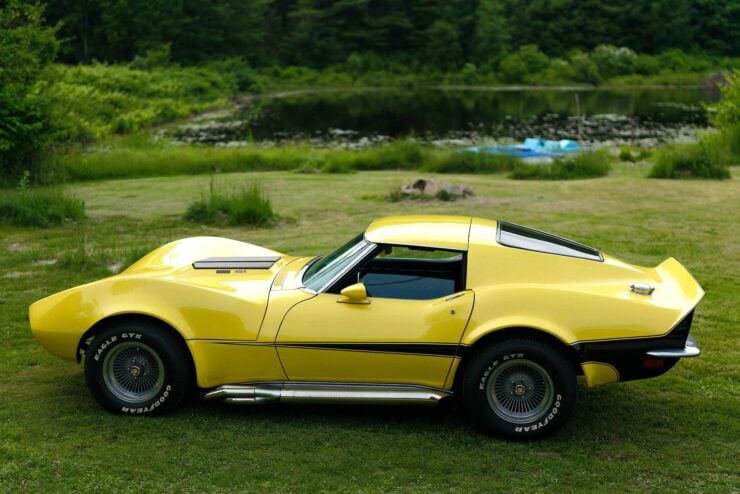
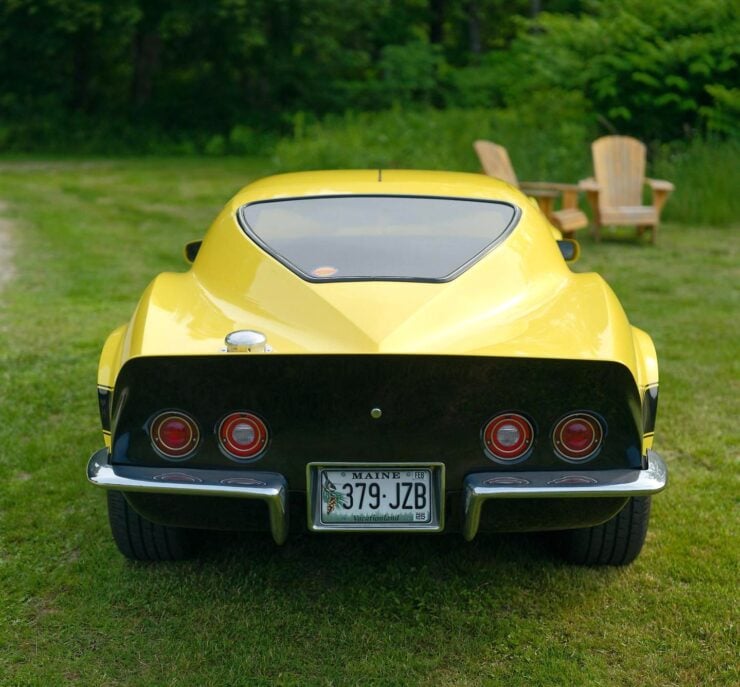
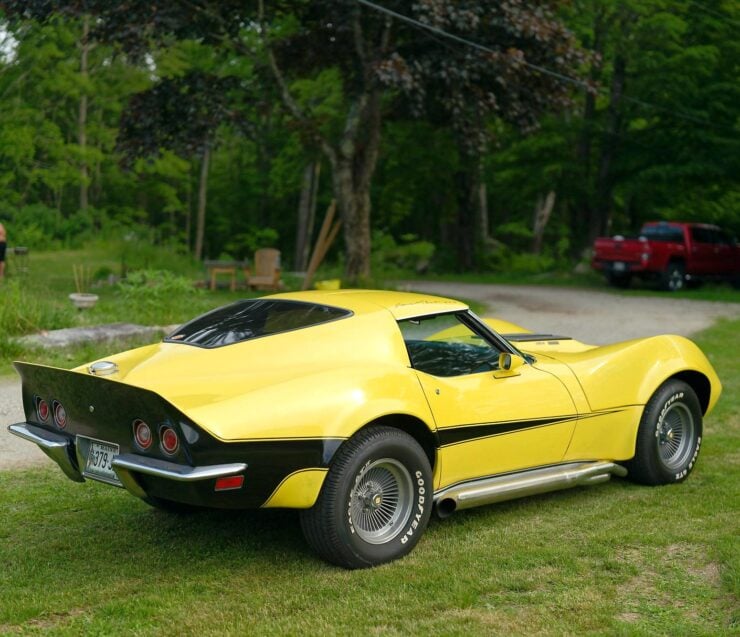
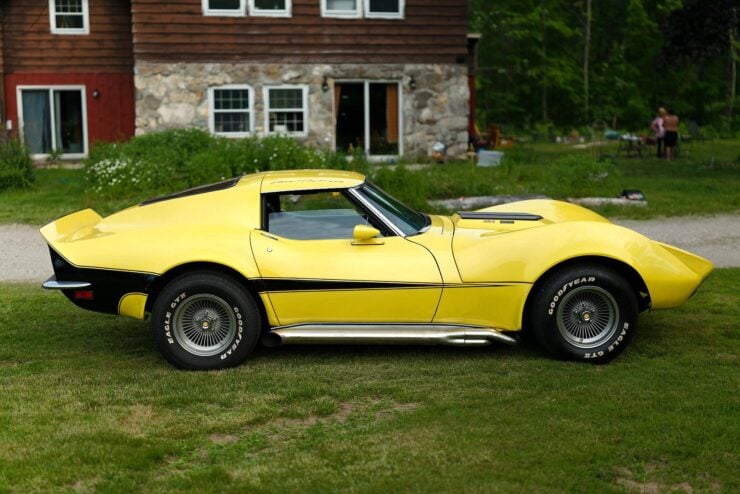
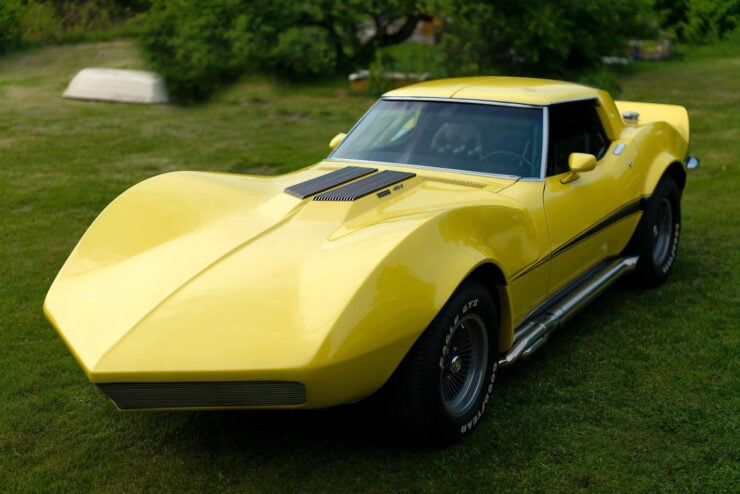
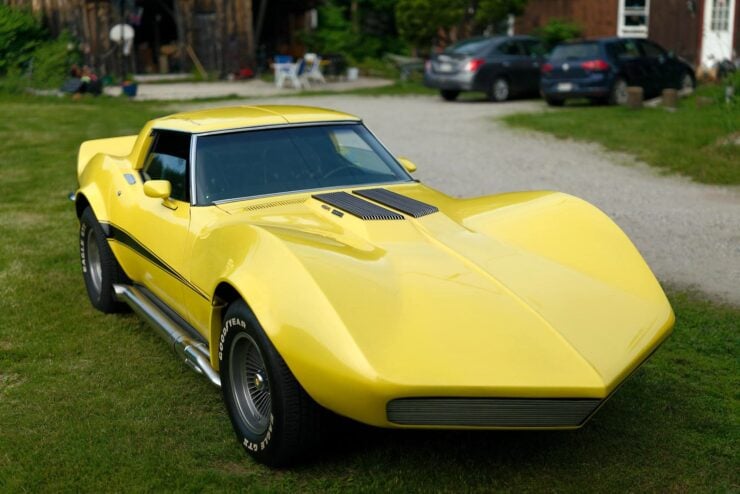
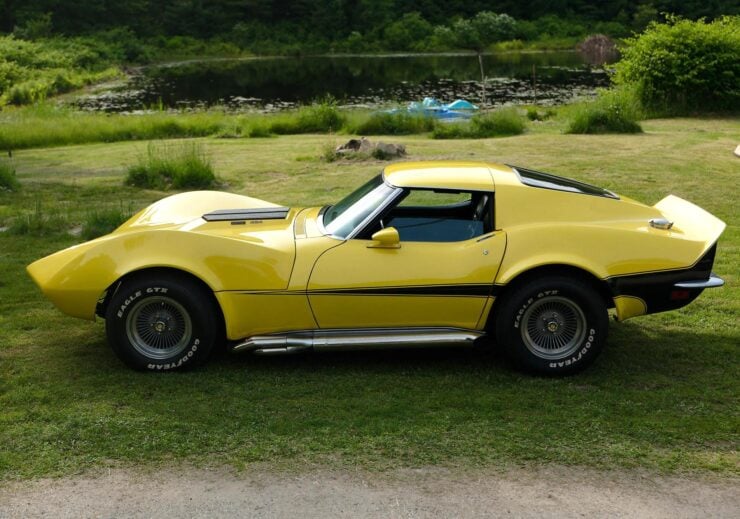
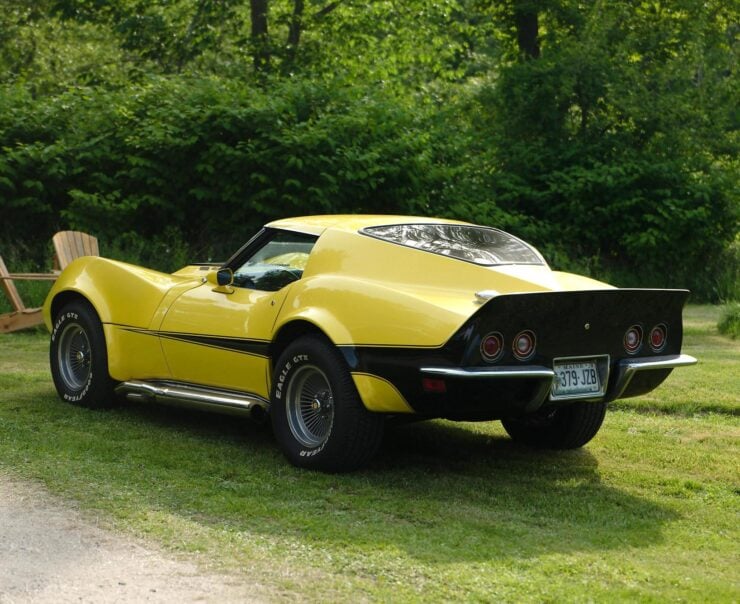
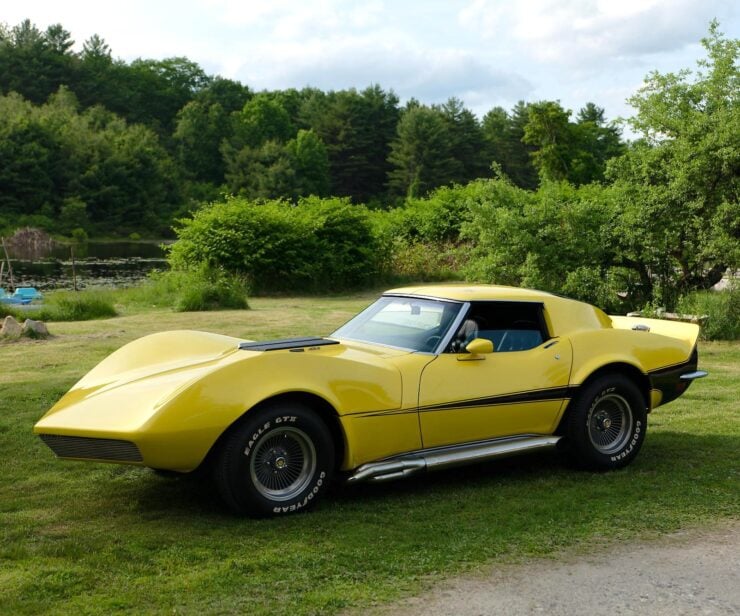
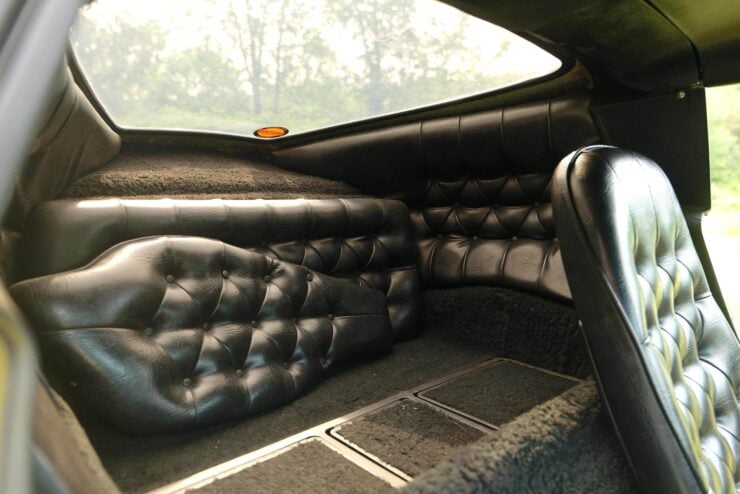
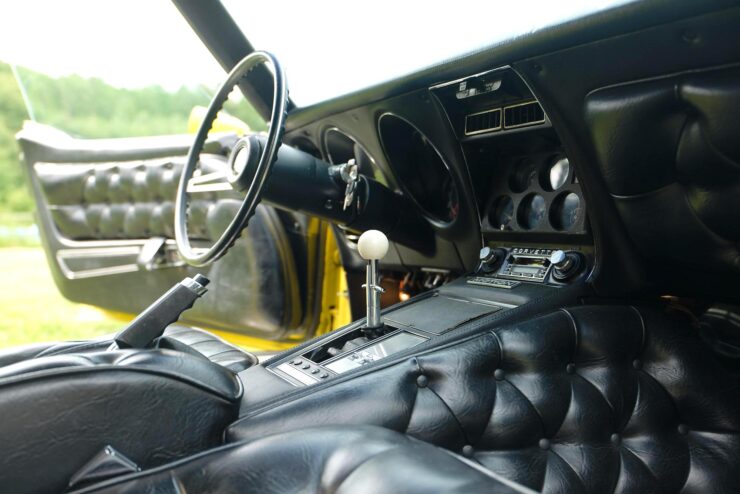
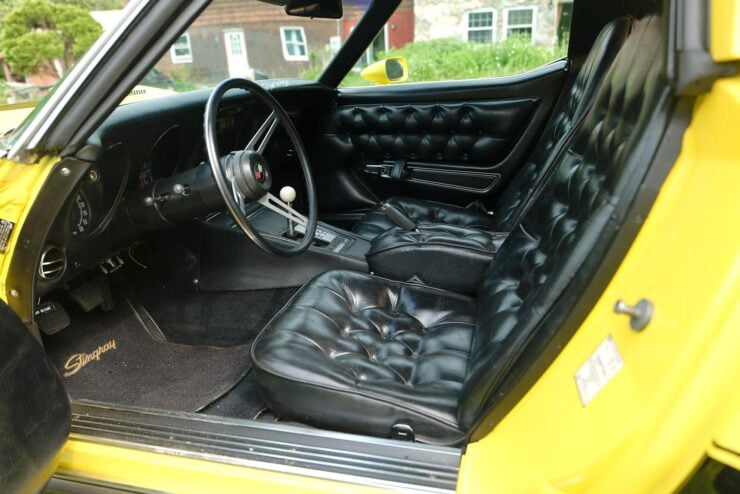
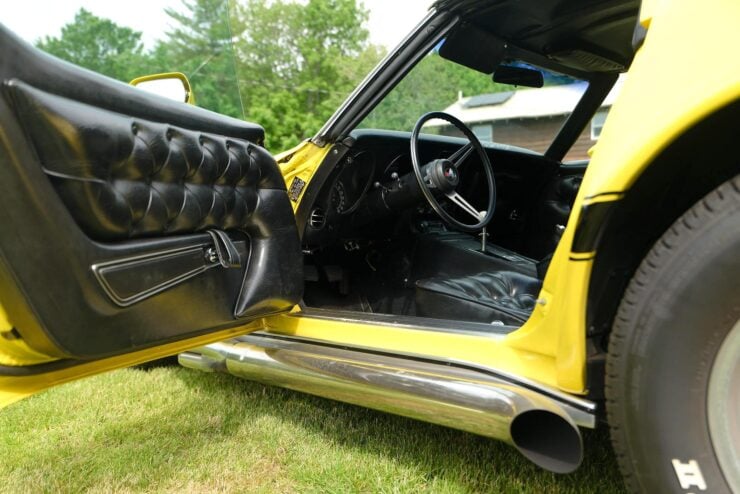
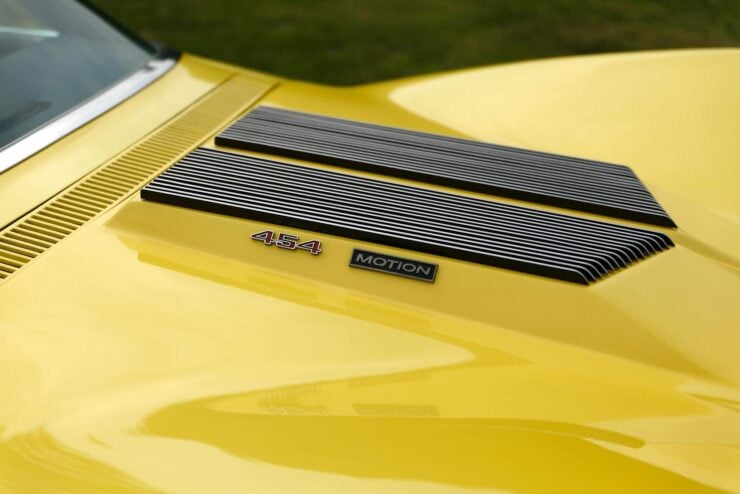
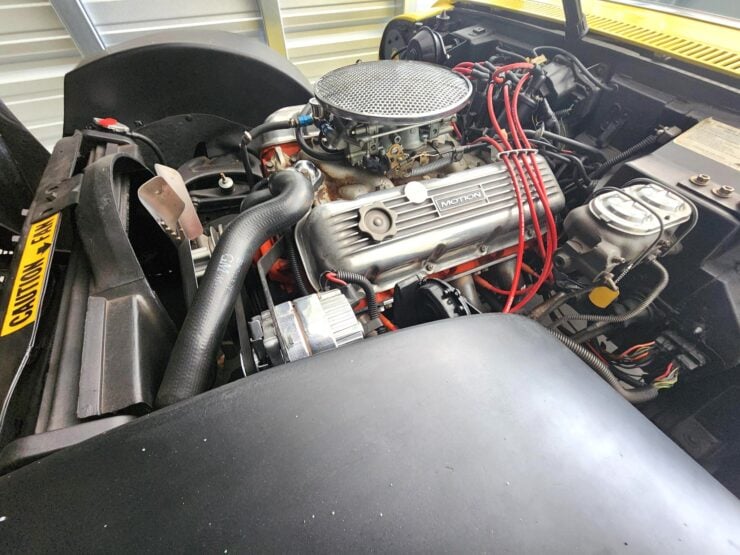
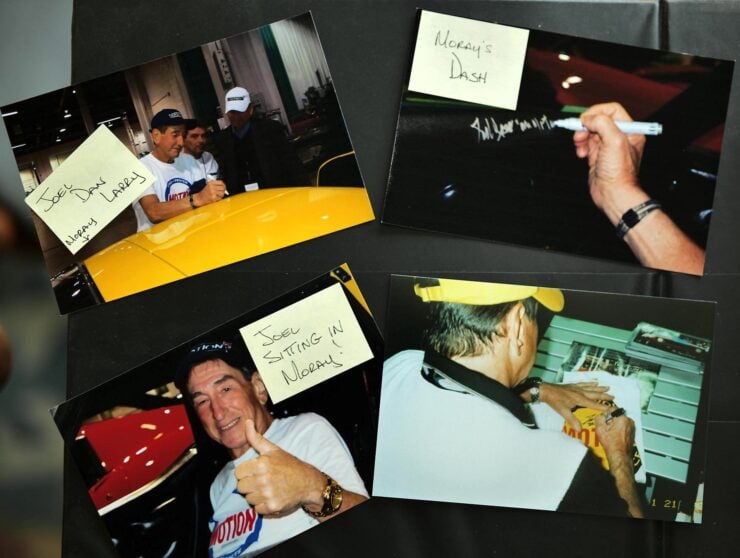
Images courtesy of Bring a Trailer

